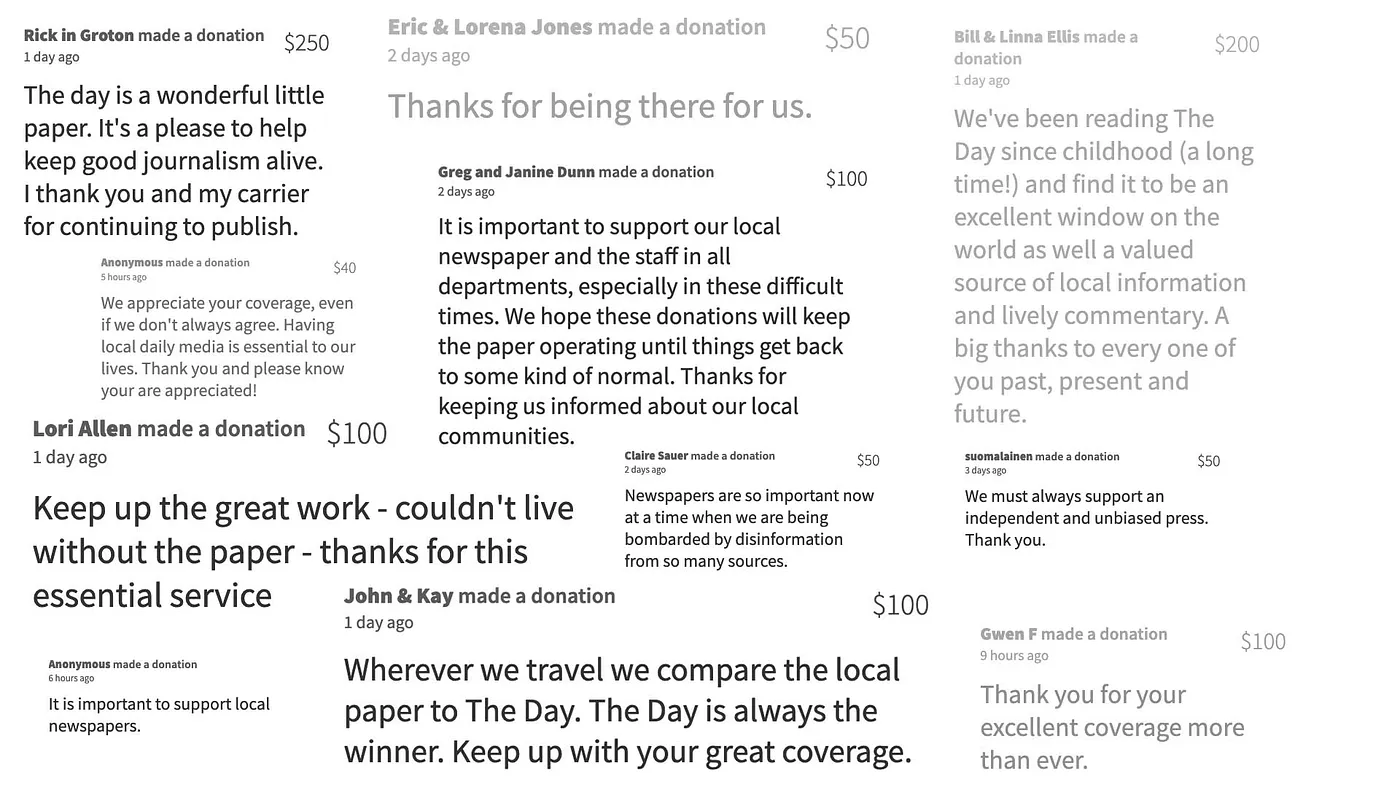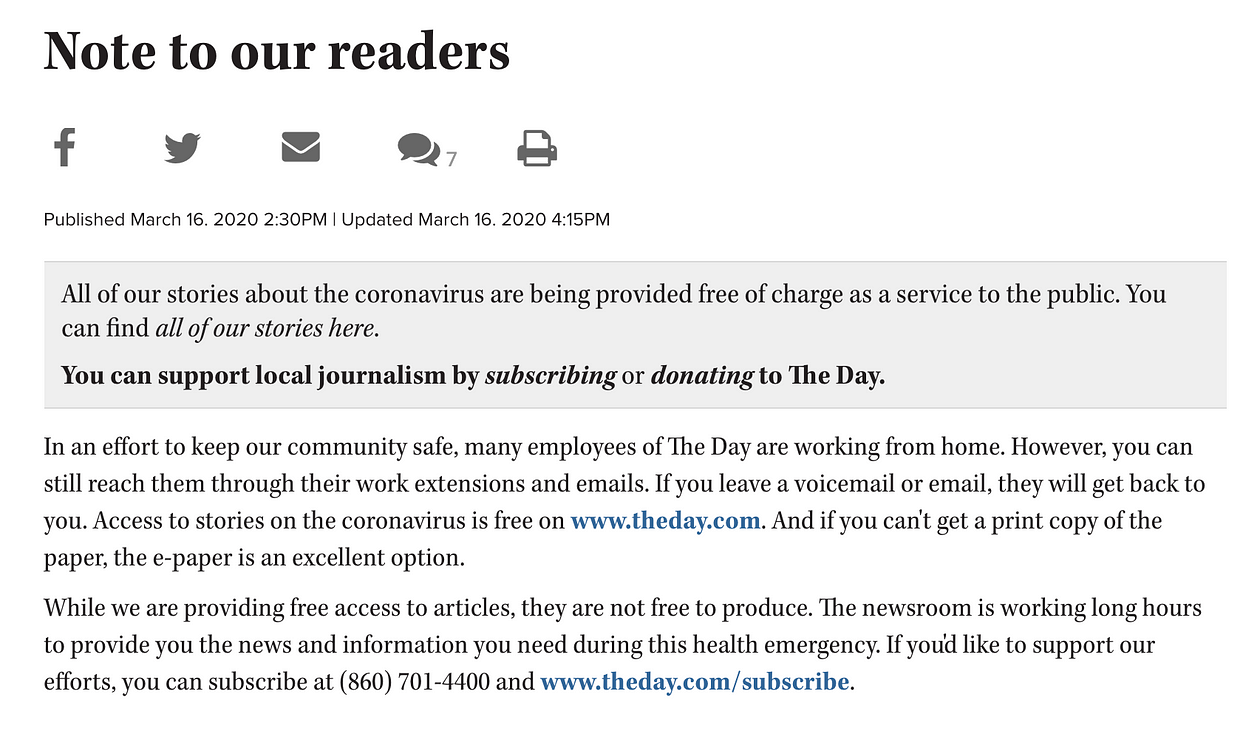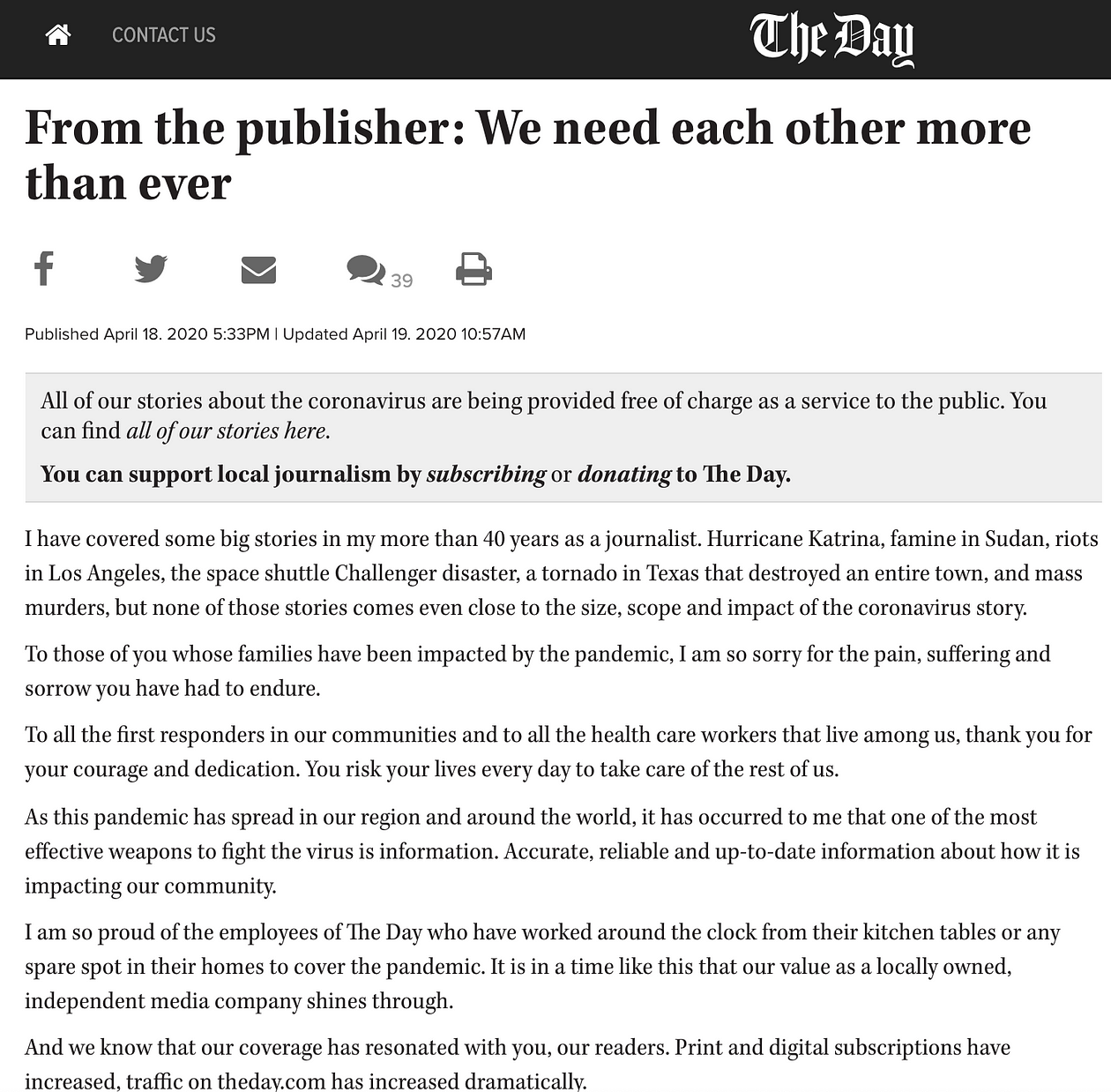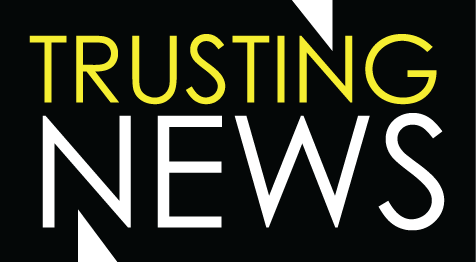
The work of journalists is telling other people’s stories. It’s what we do every day. Why then are we so uncomfortable telling our own stories? Maybe it’s because we learned in journalism school that it’s not about us, but about our subjects and our readers instead. Maybe we’re just shy. (I’ve heard from many of […]
Telling our story can have an impact on our bottom line
The work of journalists is telling other people’s stories. It’s what we do every day. Why then are we so uncomfortable telling our own stories?
Maybe it’s because we learned in journalism school that it’s not about us, but about our subjects and our readers instead. Maybe we’re just shy. (I’ve heard from many of my newspaper colleagues that part of the reason they chose this field is they did not want to be in front of a camera.)
In March, in our newsroom at The Day, we knew the coronavirus was going to affect our company, but we didn’t realize how quickly things would change and how profound the effects would be. As the weeks went by, we realized we had to step outside of our comfort zone and talk more directly about our bottom line. For us, this meant creating videos, writing notes and launching a campaign to our community. It’s resulted in more money and reader subscriptions, which will allow us to continue to report on important issues and keep people informed.
Rethinking the paywall
In addition to how the coronavirus impacted our workflows and staffing, it also had an immediate effect on readership and required quick decisions about our paywall. The Day allows website users to read three articles per month before requiring them to purchase a subscription, with an exception made for information that could directly affect public safety.
Facing possibly the biggest public safety story of our time, how would we choose which stories were deserving of this public safety designation? A narrow definition could provide a good opportunity to demonstrate the value of our reporting, but it could also risk angering a portion of our potential audience. There was also the question of the optics of pushing subscriptions at a time when so many people were losing their jobs. On March 12, we decided that all stories on theday.com related to the coronavirus would be freely accessible to all readers.
Over the next three weeks, we saw a 38% increase in website visitors and a 2% increase in subscriptions. Unfortunately, these gains were not enough to offset the loss in advertising from local businesses that had been forced to close.
As we saw newspapers around the country furloughing or laying off employees and companies that cut days from their print schedule or ceased printing altogether, it quickly became clear that we needed to let our audience know what was happening.
In the past, The Day has been fairly transparent when reporting on both good and bad news about our own business. We write stories when our reporters are recognized in journalism competitions, and we write stories when we lay off employees.

On March 16, we wrote a short note to our readers explaining that many of our reporters are working remotely. We noted that the stories we have made free to read are not free to produce. We also posted a video message reminding people of the importance of subscriptions and highlighting our digital offerings in case the virus was to disrupt the printing or distribution of the newspaper. We shared the video on our website and social platforms, and it ran as a 30-second ad on local cable.
On April 4, after our news staff had been working from home for three weeks, reporter Joe Wojtas wrote a story detailing how the change was affecting our journalists and highlighting some of the work they had done. The story also introduced a fundraising partnership with the Local Media Association. (LMA’s COVID-19 Local News Fund facilitates tax-deductible donations to independent and family-owned media companies.)
Wojtas’ story included a quote from The Day publisher Tim Dwyer.
“We’re a trusted part of this community and people look to us to provide coverage…We need the support of the community and we’ll continue to support the community. It’s time for all of us to come together to get through this.”
The article provided links where people could subscribe or donate, but it stopped short of asking directly for support.
Newsroom Response
I think this is where some people in the newsroom started to feel a bit uncomfortable. All of a sudden, the public service mission of journalism was running together with a business’s need to make a profit. In the past, a call to action like this would have come from our marketing department.
When The Day first partnered with Trusting News, two of the strategies we tested were “describe your ethics and funding” and “show individual personality and credibility.” We looked for opportunities to promote the fact that we are an independent company owned by a split-interest trust, and that we donate a portion of our profits to organizations in our community through the Bodenwein Public Benevolent Foundation. We also wrote profiles of some of our reporters with the hope that getting to know the person behind the byline would lend more credibility to their stories. The reaction from our audience was generally positive, but there was no explicit call to action and no good way to measure a quantifiable effect.
That April 4 story described how our funding was affected by the loss of advertising, and it showed who we are by relating the stories of several of our journalists. Since it was in the form of a traditional news article, there was again no specific call to action.
But, this seemed different. Something about this virus, and the existential threat to what we do, made us change that. So, we followed that article with a series of videos from the staff.

In the videos, each person explained how their work had been affected, gave some examples of the work they have been doing while working remotely, and asked the viewer directly to contribute by subscribing or donating.
There was a bit of discomfort in producing these videos. One person told me he had “a face for radio.” Another told me I was welcome not to use theirs. (I’m personally more comfortable behind the camera, so it took me about 20 takes to get 90 seconds that I was happy with.) A number of people didn’t want to participate at all.
Those that did participate agreed that during these unprecedented times, it was worth it to try something different. Our publisher agreed.
On Sunday, April 19, we ran a front-page column from the publisher in which he shared some of his personal history as a journalist, praised the work of our remote staff, explained our funding model, and candidly made the case that without more support from our readers, we might not be able to continue reporting at the level we had been.

In the two days after the column was published, donations to The Day through the Local News Fund soared from $15,000 to $40,000.
Even more amazing than the donations are the comments that accompany them:
“The Day is one of the many things that adds to the strength of community and quality of life in New London County.”
“The Day is an invaluable asset to our Connecticut community and a shining gem in the murky world of news reporting.”
“Happy to support a critical part of our democracy.”
“We are lucky to have The Day to keep us informed locally and nationally. Hang in there!”
“The Day is an essential, critically informative “quality of life” feature for our community.”
“Now more than ever, we need reliable and accurate news that The Day has always provided”
Since the start of our partnership with Trusting News, we have made an effort to be more responsive to our audience. When we ask for feedback, a lot of it is negative. We get accusations of political bias and complaints about the wire services we use for national stories. It’s important to hear the criticism and when appropriate, to respond to it. But it was refreshing to be reminded that the loudest voices do not necessarily represent everyone. There are a lot of people out there who value what we do enough to let us know with their words and with their wallets.
As of April 28, The Day has received over $60,000 in donations. Print and digital subscriptions are up, and we have also been approved for a Small Business Association loan through the Paycheck Protection Program. We will continue to report on the issues that are important to our local community, and hopefully, with the community’s help, we will get through this together.
Peter Huoppi is Director of Multimedia at The Day. You can reach him at p.huoppi@theday.com and follow him on Twitter at @phuoppi.
At Trusting News, we learn how people decide what news to trust and turn that knowledge into actionable strategies for journalists. We train and empower journalists to take responsibility for demonstrating credibility and actively earning trust through transparency and engagement. Learn more about our work, vision and team. Subscribe to our Trust Tips newsletter. Follow us on Twitter and LinkedIn.

